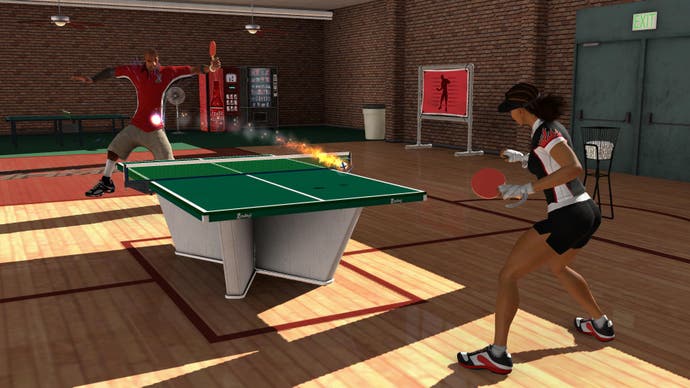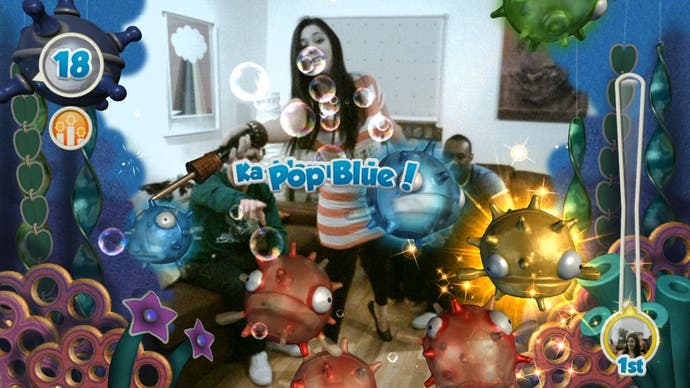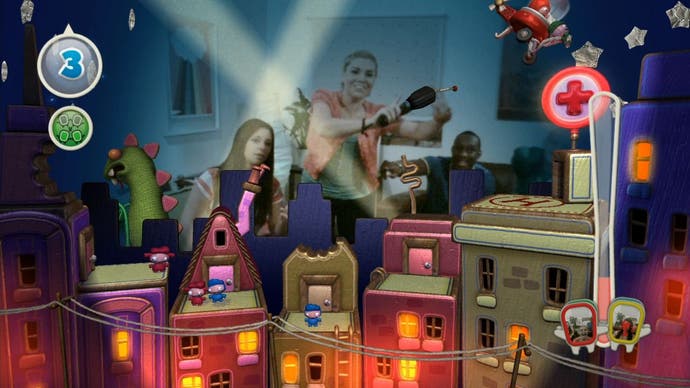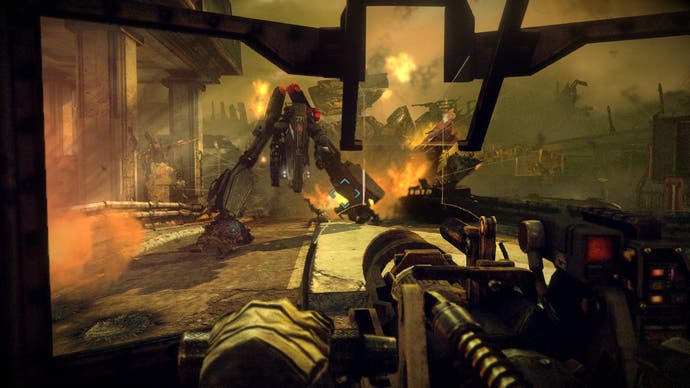The Case for PS Move
And how Sony could have owned motion control six years ago.
Move is also capable of stealing a bit of Microsoft's thunder too. Using a combination of two wands along with head-tracking, it's possible to produce a fairly accurate simulation of tracking the upper body, as this tech demo clearly shows. But what is of crucial importance is the way that the robotic puppet is capable of interacting with objects - button presses on Move can be used to grab hold of items.
As Richard Marks told us in the E3 Move tech interview, "In one of his books, Isaac Asimov talks about the difference between humans and animals and he believes it's our hands that make us different, more than our brains.
"Most people say it's the brain that's so much better, but he says it's the hands. He says that the ultimate interface to a computer isn't a probe that jacks into your head, it's where you insert your hands into this device. You have so much bandwidth going through your fingers."
Sony's Chameleon demo, shown in direct-feed quality at the end of this video, demonstrates that this combination of a true 3D motion controller combined with the ability of mimicking hand and finger movement in gameplay has rich potential for hugely innovative games with strong, original control concepts.
If Sony is facing a challenge in marketing Move as a truly revolutionary gaming interface, it has to be said that some of the blame lies in the collection of launch titles. It's difficult not to have fun with Start the Party but there's not a huge amount of depth to the overall package, the quality of the mini-games varies somewhat and it can quickly become dull.
So long as you can rustle up some pals to join in, Sports Champions is brilliant entertainment. Again, quality varies somewhat from event to event, and the antics of its charisma-free characters can induce a few facepalm moments, but its best mini-games are absolutely sublime. While the 3D nature of Move is not fully explored, it's clear that the precision of the controller comes to the fore in events like Bocce, Table Tennis and the Disc Golf. It's not quite a killer app, but it's the best party game we've played in ages.
As an introduction for Move to the casual gamer, Sports Champions is easily the best title available, but in family/friends party atmosphere, even the hardcore can't fail to appreciate its many charms. If you're a day-one Move buyer, that's the game to get.




But looking ahead to the imminent Move-supported titles, what we are generally tending to see are reworkings of the existing standards set by the Wii. Tiger Woods PGA Tour 11 gets patched with Move support, but nothing we have seen from the game suggests that the experience will be appreciably better than what you get with Wii MotionPlus - 720p HD visuals apart. Then again, it's difficult to imagine how much it could be better within the confines of the existing game.
Booting up Firemint's PS3 rendition of Flight Control HD is an interesting experience. The touch-screen controls of the original iPhone and iPad versions of the game have been jettisoned in favour of an onscreen pointer controlled by Move. Press the main button or the underside trigger to highlight an aircraft, then "draw" its approach to the runway. Simple, but classic gameplay.
Flight Control is - and most likely always will be - a lovely game regardless of platform. The concept is that strong. But there's a sense that Firemint doesn't quite trust the fine level of precision Move is capable of. There's a touch of the "auto aim" syndrome in how the flight path automatically locks on to the runway when you get close to it: it almost feels as though Move's precision is being bypassed in favour of a helping hand from the developers. This level of assistance is definitely a must for the pad rendition of the control system though, which is surprisingly very playable.
One interesting element in Flight Control is the inclusion of a simultaneous two-player co-operative mode. A cool offshoot of this is that the really brave can dual-wield two Moves for a spot of ambidextrous gameplay. Nice.
We've seen several applications of Move within the shooter genre thus far. First up is the implementation within the forthcoming SOCOM 4, while recently, at gamescom, Guerrilla Games revealed its setup for Killzone 3.


The sobering truth is that the control schemes on these games offer very little that we've not seen already on the Wii in titles such as Call of Duty: Modern Warfare and The Conduit. Movement is carried out via the navigation controller or the DualShock 3, while Move is used for looking, aiming and shooting.
On the one hand, there are clear advantages to this scheme. The view weapon becomes more independent from the player's orientation, meaning you can fire in the direction you are not directly facing. Also, there is a finer degree of control you have in aiming, which feels particularly pleasing in sniping-style situations, or when using iron sights. On the other hand, adjusting your personal viewpoint entails either holding down a button or "dragging" the reticule to the edge of the screen, which feels a touch counter-intuitive.
While the control system works well, there's still a sense that the depth perception in which Move excels is barely utilised and the feeling is very much Wii-like. Guerrilla has tossed in gesture recognition. For example, "stabbing" into the screen with Move instigates a melee move, while reloading is also gesture-driven but it feels somewhat tacked on and again, not hugely intuitive. Pressing a button is quicker. However, the grenade-tossing mechanism does appear to make use of the "3Dness" of Move and seems to work rather well.
Finally there's The Shoot from Cohort Studios, an old-skool on-rails arcade shooter very similar in execution to the likes of Time Crisis and Virtua Cop. This demonstrates another useful facet to the functionality that Kinect is not capable of - you can point with Move. Over and above the applications in shooting games, this also makes for menu interactions far faster than you'll find in Kinect based on our experiences with the Microsoft sensor thus far.








